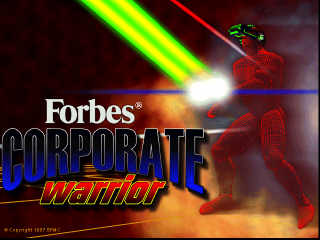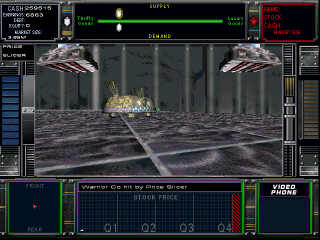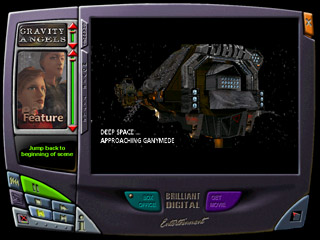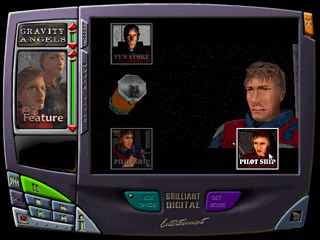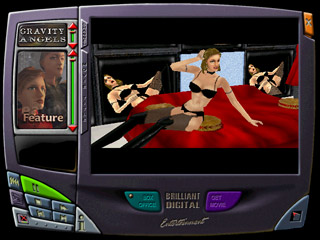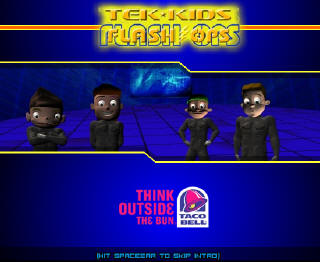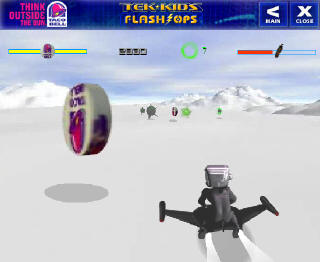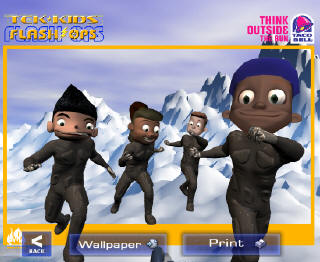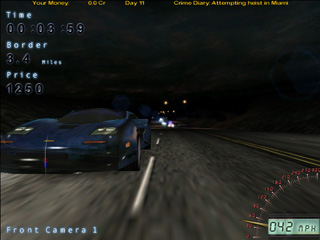I had a pretty negative experience the other night with Pro Pinball on the Sega Saturn. To be fair, not entirely the game’s fault. I think a lot of it had to do with the difficulty of getting the game to run on the Saturn, and the video darkness and delay problems that result from sending the Saturn A/V through my computer. But then I remembered that I have at least 2 more pinball games in the queue, both of which were slim boxes purchased at the dollar section of a Super Target store, along with 5 other games yet to process; none of the 7 are in MobyGames yet.
So I broke out a title called Arcade Pinball. Since it was so cheap, and it has so many company logos on the box, in addition to AOL offers, I was eager to see who was actually, originally responsible for the actual game. When I go to install the game, I find out that it is not one game, but five! This is what MobyGames affectionately refers to as Compilation/Shovelware. It seems that a company appropriately called Pin-Ball Games Ltd. specialized in these games. Do you know what this means for this Gaming Pathology project? That having played all 5 of these games tonight, I have taken care of my gaming obligation through Monday! But I won’t do that. But I will split this up into 2 entries and cover the first 3 pinball games today. The other 2 games group well for tomorrow’s entry.
The first of the 3 pinball games is The Avengers Pinball. Fans of the old show (as I once was, before the dreadful 1998 movie) will recognize this intro clip lifted wholesale, but with the word “pinball” stuck in just the right places:
I haven’t even checked what format the video happened to be in. I just let YouTube worry about it! Magical! But I digress. About the actual pinball game, here’s the Avengers table:
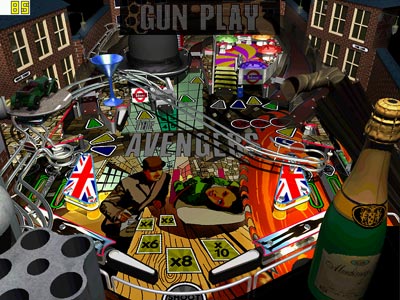
You’ll notice it’s very crowded and busy. But what a refreshing change from the bland pinball board from the other day! And Robert was right when he said that many pinball games have the nudging feature; this game has it too. It does not actually show the table moving. However, if you look on the right side of the board, there is a little green bubble level meter — the same used as a construction tool — to indicate that the table has moved.
One of the unique features of this table is that the ball will go into the revolver seen in the lower left part of the screen which then cocks and shoots it back out into the table. See? That’s the kind of outlandish novelty I look for in a computer pinball simulation. There is a bonus round between ball launches where the letters AVENGERS light up in sequence and the player has to capture it when all the letters are lit.
Here is the next table, an adaptation of the comic book eventually turned into a movie, Judge Dredd:
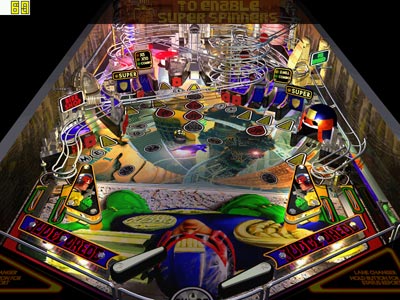
All 3 of these pinball games (unlike the 2 which will be discussed tomorrow) look like they’re built on the same engine. On that note, here are some notes I jotted down that cover all 3 boards:
- The title screens for the games have a slideshow. Pro Pinball had this as well. Perhaps this is a standard feature of modern pinball simulators. Unlike Pro Pinball, these boards are actually interesting enough to examine up close.
- The flippers were awfully far apart, more so than any reasonable pinball game I have ever seen. However, this is the first time I have ever successfully leveraged the nudging feature to compensate.
- I had trouble running the games. Lots of crashes on “winpin.exe”. There are also bizarre visual glitches: Lots of flickering, but mostly that is restricted to intro and setup screens.
- Those numbers in the upper-left corner are artifacts from Fraps screen capture. It is supposed to be configured to not capture its own framerate count along with the screenshot, and that feature usually works. I think this is another artifact of the visual glitching.
- There are apparently 5 languages supported as the first screen allows you to choose among 5 flags (when I make a game, I’m going to do the same thing, but with a U.S. flag, a U.K. flag, an Aussie flag, you get the idea),
- Each pinball game has a setup screen which, apparently, allows you to select among “640”, “800”, and “1024”. I suspect that refers to video modes. But “1024” is always disabled. Same for 24-bit mode (I can only select 8- and 16-bit). Same for 11 KHz over 22 KHz. Despite that, the video and audio are still amazing.
- I’m not entirely convinced the physics are as accurate as they could be, but I still like the games. One of the more curious manfestations of quirky physics was when the ball bounces furiously between the forward bouncers, the ones just above the flippers (I’m not up on pinball technical terminology).
- There is a high score count that allows you to enter your name when you make the cut. The board is pre-populated with the same name (e.g., “THE AVENGERS” on Judge Dredd). However, the field does not allow you to enter more than 7 characters.
The final game/table is an alien-themed Roswell:
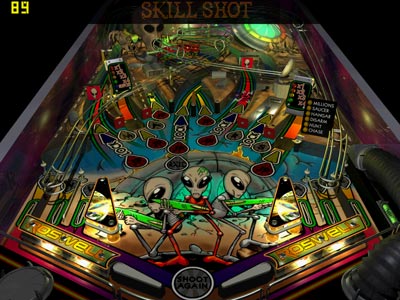
This has a great, cheesy, 3D pre-rendered intro video. I wish I could find the right file and upload it to YouTube. This one has an alien ray gun that comes out of the lower-left corner and fires onto the table. I’m not sure what triggers that or what the net effect is, but it’s still cool.
